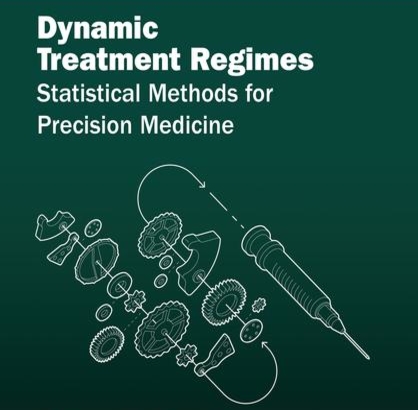Chapter Objectives
There are two objectives in this chapter. First, we seek to estimate the value of a fixed treatment regime. In the nomenclature of potential outcomes this value is defined as
\[ \mathcal{V}(d) = E\left\{Y^{\text{*}}(d)\right\}, \]
where \(Y^{\text{*}}(d)\) is the potential outcome that an individual would achieve if assigned treatment according to regime \(d\).
For treatment regimes of the form \(d=\{d_{1}(H_{1})\}\), \(Y^{*}(d)\) is defined as
\[ Y^{\text{*}}(d) = \sum_{a \in \mathcal{A}} Y^{\text{*}}(a)~ \text{I}\left\{d_{1}(H_{1})=a\right\}. \]
Recall, \(H_{1}\) is the history of covariates available at the first decision point, i.e, \(H_{1} = X_{1}\), the baseline covariates. And, \(\text{I}(z) = 1\) if \(z\) is true; zero otherwise. In the following pages, we provide implementations for several of the estimators of the value of a fixed regime that were discussed in Chapter 3 of the book: the outcome regression, the inverse probability weighted, and the augmented inverse probability weighted estimators. For each method, we
- provide a brief review of the form of the estimator,
- define an estimator specific form for standard error estimates,
-
present
R code to illustrate how one can implement the method and standard error being discussed, and - show the results of those implementations for a variety of models.
The implementations discussed are not general, having been written for the example data set, and they do not incorporate validation steps that we believe are important in all code development. We provide more general and robust implementations through an R package DTRBook, which is available for download under the
The second objective in this chapter is to identify an optimal treatment regime
\[ d^{opt} = \underset{d \in \mathcal{D}}{\arg\!\max} ~ E\{Y^{\text{*}}(d)\} = \underset{d \in \mathcal{D}}{\arg\!\max} ~ \mathcal{V}(d). \]
Most of the estimators for \(d^{opt}\) discussed in this chapter have been implemented in
